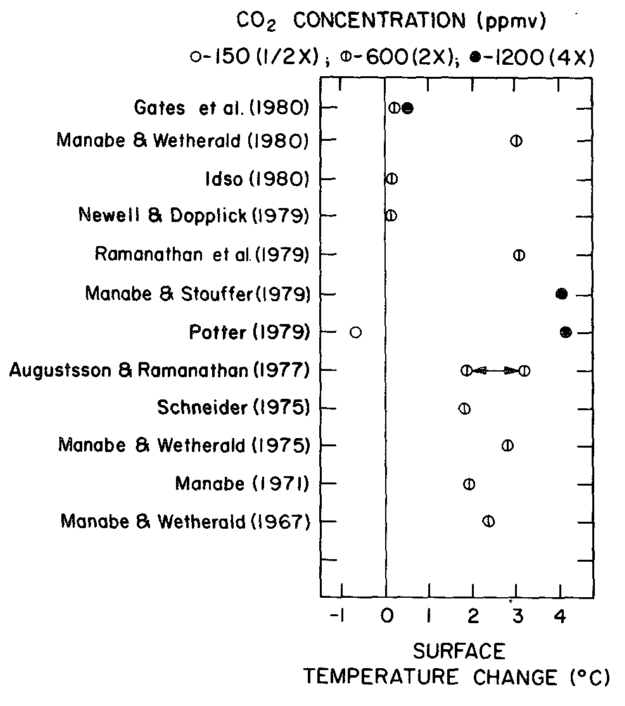I realized that I need to brush up on the classic literature about global warming. This paper seemed like a good place to start.
This paper was more of history lesson than anything else. At the time, the aim of this paper was novel because it looked at the impacts of CO2 from the perspective of surface energy balance, instead of focusing on the top of atmosphere (TOA) energy balance. Overall, Ramanthan concludes that the two viewpoints are consistent, but he was able to highlight the role of ocean-atmosphere coupling, and how it feeds back onto the surface temperature response.
The other history lesson in this paper is about how coupled models used to work. Since computers of that day were so limited, models were coupled asynchronously. This means that the atmosphere and ocean models were run one at a time, using the latest output from the other as a boundary condition. Ramanthan mentions that although this method was used partly out of necessity, he also says it was physically justified:
“The asynchronous scheme is theoretically justified on the basis that the thermal relaxation times for the ocean and the atmosphere are different by several orders of magnitude with the ocean relaxation time the larger of the two.”
In this paper, Ramanathan mainly uses a synchronous scheme, but he also uses an asynchronous scheme for comparison based on Washington et al. (1980), in which the atmosphere model is run in 15 day increments and the ocean model is run for 5 year increments!!! I had no idea people used to run models like this! Ramanathan shows that ignoring how the atmosphere and ocean influence each other is a terrible idea.
His experiments are done with a couped single column model, so the surface was ocean (no land). One of the main results is that the ocean-atmosphere coupling provides a crucial feedback mechanism. His diagram is Figure 4 shows this nicely.
So there are 3 processes that contribute to surface warming:
- Direct Heating of the surface. The enhanced CO2 directly heats the surface by reducing its radiative cooling.
- Direct heating of the troposphere. The enhanced CO2 directly heats the troposphere, which then emits thermal radiation back down, warming the surface. This is probably the most basic way to think about global warming.
- The water vapor feedback. We can break it down into subprocesses:
- Surface warming leads to more evaporation since the warmer air above the ocean surface can hold more water vapor.
- The extra water vapor in the air is a stronger greenhouse gas, so it contributes a direct warming of the troposphere, which then radiates down to the surface in a similar manner to process #2.
- The stronger evaporation needs to be balanced by more precipitation, which means more latent heat release occurs in the troposphere. This extra heating of the air also leads to more downward emission of IR, further heating the surface.
I’m a bit confused why #1 & #2 are separate processes. I think I’m missing something here…
Ramanthan estimates the contributions of each of these processes, and the water vapor feedback is clearly the largest factor in driving the surface temperature response. He uses this separation of processes to explain why some previous studies have found a very small response of surface temperature to CO2. The problematic studies in the figure below all used relatively simple single column models, but their model formulation ignored process #3!

He goes on to show how an asynchronous coupling method inadvertently alters the water vapor feedback of the model, such that the transient climate response to a forcing is delayed in a very serious way (see below). Not only is this a problem for looking into certain problems, but even if you just want to reach an equilibrium it will take longer to get there!


